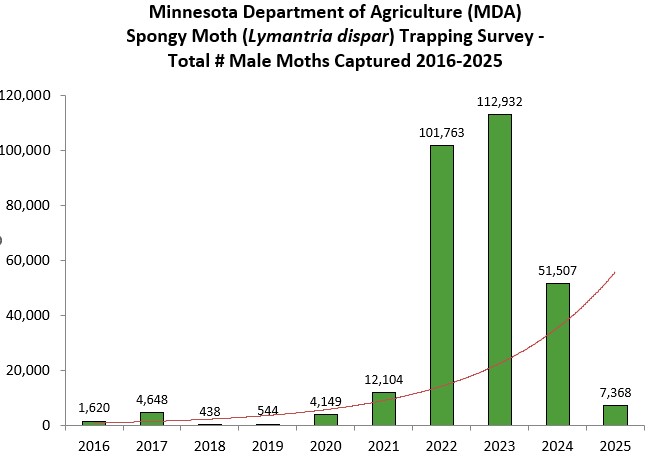Return to spongy moth main menu
Spongy Moth Survey
Each year the MDA sets around 20,000 spongy moth traps throughout Minnesota to determine the location and size of spongy moth populations. The MDA's survey program is closely tied to the insect's biology. The female uses a pheromone, or sex attractant, to lure the male moth to her for mating. Although humans can't detect the scent of the pheromone, it is a powerful attractant to the male spongy moth. Scientists have developed a synthetic spongy moth pheromone, which is used to lure male moths into survey traps.
MDA survey staff and cooperators deploy weatherproof cardboard traps. Triangular delta traps can be orange or tan in color and are the standard trap type used. Milk carton traps are green and are used in areas where the expected moth counts are higher. The male moth flies to the trap to mate but instead ends up ensnared in a sticky substance inside the delta trap or perishes from the pesticide strip in the milk carton trap.
Survey staff are employed each summer to set, check and remove the traps. It is a full-time seasonal position that requires considerable driving and the ability to work outdoors in all kinds of weather.
Job Opportunities
Check out opportunities to be a Forest Pest Spongy Moth Surveyor.
Survey Results- Minnesota
The spongy moth survey program concentrates on the eastern half of the state due to the natural westward movement of spongy moth through Wisconsin as the population front expands. Selected high-risk businesses also receive survey traps throughout the annually designated trapping survey project area. Over the years, the trapping survey has shown us where spongy moth populations are starting up, building, and moving.

ArcGIS Online Spongy Moth Trapping Survey Results Map
Open the interactive map in a new window



